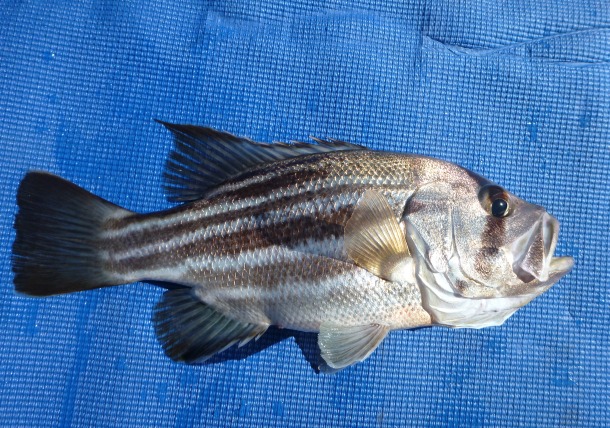A FEW months ago we looked at some fish facts about pearl perch, one of the tastiest species encountered by anglers fishing offshore along Australia’s east coast. What sandgropers are constantly reminding east coast anglers is the fact that pearlies (in their opinion) are just a smaller and allegedly less famous/tasty cousin of the Western Australian dhufish (Glaucosoma hebraicum).
While the scientific name of the fish has not changed since it was first described by Richardson in 1845, many a pub argument has been started over the “correct” common name of this species. Richardson originally ventured the name West Australian jewfish, but since then G. hebraicum has been known variously as jewfish, jewie, Westralian jewfish, Western jewfish, WA pearl perch, dhufish, or just simply dhuies. Only in recent years has the name WA dhufish become standardised (for both marketing and legal reasons) and thus widely accepted.
Whatever their name, G. hebraicum is endemic only to Western Australia, occurring offshore on rocky and coral reefs along the coast from Shark Bay southwards to Cape Leeuwin, and into the Great Australian Bight as far east as Esperance. They are a bottom dwelling species that occurs in small schools or individually around rocky reefs, ledges, dropoffs and caves at depths between a few metres to over 200 metres.
Juveniles are more commonly observed in shallow waters and are not usually caught in waters over 100 metres deep, while in the summer months adults move from deeper waters into shallower waters (usually between 25 and 75 metres) to spawn. At other times these fish tend to have small home ranges, with tagging studies indicating they tend to stay in one place for most of their lives.
Dhuies are the largest member of the pearl perch family (Glaucosomatidae), potentially growing to an impressive size of over 1.2 metres and in excess of 25 kg. Because of this they can be easily distinguished from the other two closely related species of Glaucosoma that occur in WA waters. The other two species, namely the Deepsea jewfish (Glaucosoma buergeri) and threadfin pearl perch (G. magnificum), are much smaller and occur further north in more tropical waters off the Kimberley coast. In fact, like the threadfin pearl perch, which has distinctive black elongated fin rays stretching rearwards from the tips of its dorsal, anal and tail fins, male WA Dhufish also have an elongated fin ray on the upper rear of the dorsal fin, but it is a lighter (even white) colour. Female dhufish lack this fin ray and the rear of their soft dorsal fin tends to be more rounded.

WA dhufish have cavernous mouths for their size, which allows them to feed on a wide variety of prey, mainly smaller fishes, but also molluscs (squid, octopus) and crustaceans as large as juvenile rock lobsters. Most feeding tends to occur at night. Despite their large mouths, WA dhufish are a slow growing species. Sexes are separate throughout their lives, and while these fish start to develop gonads in their third year at around 30 cm long, it takes a few more years before both males and female WA dhufish are properly mature. Meaningful reproduction is only achieved by fish that are older than around 8-10 years (between 50 and 60 cm long).
Growth slows dramatically after they mature, meaning that WA dhufish approaching a metre long are likely to be upwards of 20-25 years old. Males tend to grow slightly larger than females. Indeed, all metre plus WA dhufish tend to be male, with the oldest dhuie aged to date being a 112 cm male which was 41 years old.
There is evidence that suggests larger female WA dhufish over 70 cm long contribute disproportionately more to recruitment than do the more numerous, but smaller females. Because of their biological characteristics of slow growth, late maturity, aggressive feeding and the advent of today’s powerful fishing technology in the form of sounders and GPS, populations of WA dhufish have experienced heavy fishing pressure in recent years. This resulted in significant declines in their populations, so in order to rebuild their populations, WA Fisheries has enacted strict regulations including closed seasons to protect spawning fish, bag limits of one fish per angler, as well as the minimum size of 50 cm, with the aim of halving fishing effort from 2005/06 levels. These management measures appear to have been successful, with signs of stock recovery in recent years.
With bag limits of one fish per angler and a decent minimum size, lots of WA dhufish are now released, but being a demersal bottom dweller, this species tends to be prone to pressure damage (barotrauma) when taken from depth. Because of this, in some parts of WA it is compulsory to possess a “release weight” when fishing for demersal fish, mainly so that released dhufish can be quickly recompressed, which helps to improve their post-release survival.

















